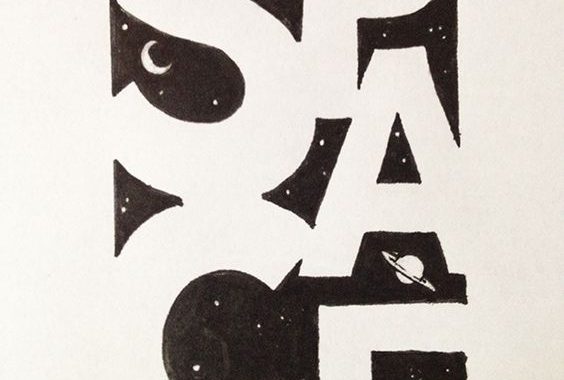Whether we are indeed in the epoch of space, as Foucault (1984) contends, is secondary to the fact that space has become a ‘key word’ (Harvey 2006). It has also become a substantive research topic across multiple social science disciplines (see de Vaujany and Mitev 2013), especially since the so-called ‘spatial turn’ in social theory (Soja 1989). According to Harvey (2006), rendering any generic definition of the term is a ‘hopeless task’. Furthermore, because the literature on space is considered both highly fragmented (Weinfurtner and Seidl 2018) and as part of a ‘wildness of spatial theories’ (Beyes and Holt 2020), what we are left with, then, is, by necessity, a TiP lexicon entry devoid of innocence; a particular perspective that highlights some aspects while occluding others.
Aiming to avoid what Lefebvre (1991) characterized as two common illusions about space: ‘the illusion of transparency’ (that spatial reality is confined to a cognitive world of imagined representations) and ‘the realistic illusion’ (that space is simply physically located in a world of material things), I support an understanding of space as both the site and the source of organization, both a material arrangement and an achievement of material practice. With an STS inspired vocabulary, we might, therefore, say that space is always already “intertwined with practice, rather than simply conditioning, carrying, or containing it” (Moser 2017:90). Space is a mutual accomplishment, which places an emphasis on matters of practical, ongoing constitution work where “space is an ordered outcome of work done to make sense of and account for spaces in ordinary, pervasive, and ongoing interactions” (Woolgar and Neyland 2013:171).
As an example, we might for a moment consider nurses working with patients in a modern psychiatric hospital I studied; a particular site for the (spatial) organization of care. In providing care, nurses can move patients to certain spaces within a ward – a patient-room or a common-area, say – based on either the patient’s acceptance or not. Yelling, for instance, is not allowed in the common-area, but accepted in the patient-room. Moving patients between spaces based on the idea that yelling is a place-appropriate activity shapes the characteristics of those spaces. While the physical spaces allow for the moving around of patients, the sanctioning of behavior simultaneously enacts those spaces in a particular way. This spatial organization of psychiatric care is constituted by, as well as constitutive of, the very spaces within which it takes place. Practices may then recursively build upon and make use of the ordered outcomes of interactions between patients and nurses (yelling here not there) that the enacted spaces provide. Enacted spaces are no less real than physical spaces.
Our ordinary everyday sense of space must be taken as a topic of inquiry (Crabtree 2000). As such, I think we should closely follow and detail the situated practical actions taking place within and across physical spaces (Simonsen 2020) and engage in the patient and documentary tracking of spatializations ‘in action’ (Osborne and Rose 2004) in order to understand the ongoing production of space.
Author: Thorben Simonsen
References
Beyes, Timon and Robin Holt. 2020. “The Topographical Imagination: Space and Organization Theory.” Organization Theory 1(2):263178772091388.
Crabtree, A. 2000. “Remarks on the Social Organisation of Space and Place.” Journal of Mundane Behavior 1(1).
Foucault, Michel. 1984. “Architecture /Mouvement/ Continuité.” (March 1967).
Harvey, David. 2006. Space of Global Capitalism. Verso.
Lefebvre, Henri. 1991. The Production of Space. Blackwell.
Moser, Ingunn. 2017. “Sustaining the Webs of Life: An STS-Approach to Space, Materiality and Subjectivity in Care.” Pp. 83–92 in Caring Architectures – Institutions and relational practices, edited by C. Nord and E. Högström. Cambridge Scholars Publishing.
Osborne, Thomas and Nikolas Rose. 2004. “Spatial Phenomenotechnics: Making Space with Charles Booth and Patrick Geddes.” Environment and Planning D: Society and Space 22(2):209–28.
Simonsen, Thorben P. 2020. “The Spatial Organization of Psychiatric Practice – A Situated Inquiry into ‘Healing Architecture.’” Copenhagen Business School.
Soja, Edward W. 1989. Postmodern Geographies: Reassertion of Space in Critical Social Theory. London: Verso.
de Vaujany, François-Xavier and Nathalie Mitev, eds. 2013. Materiality and Space – Organizations, Artefacts and Practices. Palgrave Macmillan.
Weinfurtner, Tania and David Seidl. 2018. “Towards a Spatial Perspective: An Integrative Review of Research on Organisational Space.” Scandinavian Journal of Management (April 2017):1–30.
Woolgar, Steve and Daniel Neyland. 2013. Mundane Governance – Ontology & Accountability. Oxford University Press.
